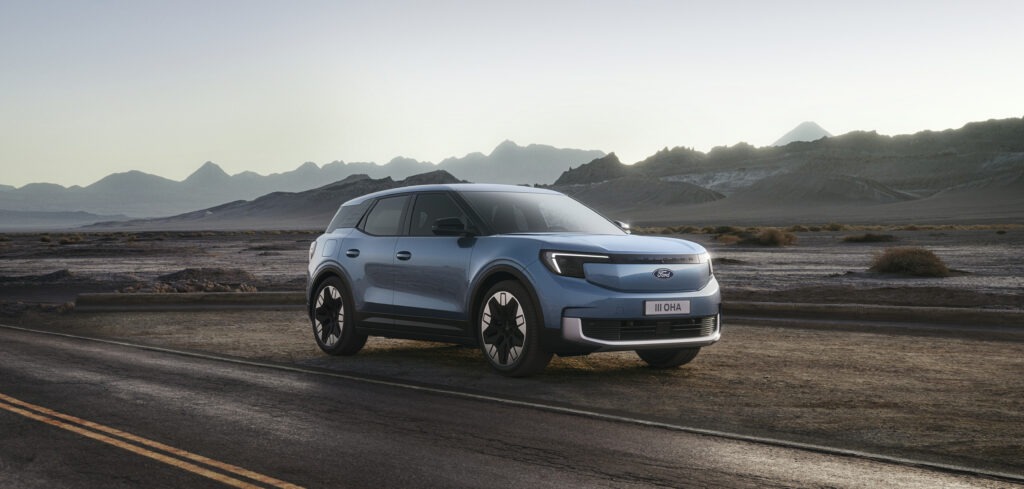Two of Europe’s major new-car markets struggle in May
11 June 2024

May exposed weaknesses in two of Europe’s biggest new-car markets, as it became clear 2024 will not be straightforward. Autovista24 special content editor Phil Curry explores how different powertrains affected figures in France, Italy and Spain.
Following a bounce-back from an Easter-impacted March, many would have hoped that May could continue a trend of growth. However, the new-car markets of France and Italy suffered declines, while Spain saw growth, thanks to just one powertrain.
May featured the same number of working days as the same month last year in all three markets. Therefore, the registration performance highlighted a slowing in demand, following a strong year of growth in 2023. It now appears that the bounce back from the supply-chain crisis of 2021 and 2022 is over.
France fell in May
PFA figures show the French new-car market dropped by 2.9% in May, with 141,299 deliveries, according to Autovista24 calculations. This is the second decline of 2024, following a poor market showing in March.
However, while that performance could be due to 2024’s early Easter, there is no such reason for May’s decline. There were also the same number of working days in the month compared to May 2023. Therefore, France’s new-car market has entered a period of potential volatility.
The market was saved by the performance of hybrids, including full hybrid (HEV) and mild hybrid (MHEV) powertrains. The PFA splits the two powertrains into separate categories.
HEVs led the way in terms of volume and market share. The powertrain saw growth of 36.9% year on year, with 25,361 deliveries in May. This equated to a market share of 17.9%, up from the 12.7% recorded at the same point in 2023.
MHEVs saw the biggest growth in the month, with 22,050 units up by 39%. This gave the powertrain a 15.6% market share, an increase of 4.7 percentage points (pp) on May 2023.
Battery-electric vehicles (BEVs) also recorded positive results, the only other powertrain to do so in the month. The all-electric technology saw registrations increase by 5.4% year on year. Its 23,887-unit total was just over a thousand units higher than in the same month last year. This left BEVs with an improved market share, holding 16.9%, up 1.3pp over May 2023.
Figures down
Meanwhile, plug-in hybrids (PHEVs) struggled in May. Their registrations were down 19.4%, with 10,201 deliveries made in the month. This meant the powertrain’s market share dropped to 7.2% from 8.7% last year. This is also the second-consecutive month that PHEVs have been outperformed by diesel powertrains.
The performance of PHEVs pulled the overall electric vehicle (EV) market down. Made up of PHEVs and BEVs, this category slipped into an overall decline in May, with deliveries down 3.5%. Market share remained almost stable, with 24.1% just 0.2pp down on the same time last year.
The electrified market, made up of vehicles that can travel on electric power alone, once again dominated the French new-car market. HEVs, BEVs and PHEVs made up 42.1% of all registrations in the month. In the year-to-date figures, these powertrains held 42.9%, comfortably ahead of ICE.
Hydrogen fuel-cell vehicles (FCEV) have also performed strongly in the French market this year. Deliveries of the zero-emission technology reached 504 units in the first five months of 2024, an increase of 425% from the 96 registrations in the same period last year.
ICE slides in May
Internal-combustion engines (ICEs) continued their slide in May, with both petrol and diesel models suffering serious declines.
With 43,407 units, petrol-powered cars ended May down by 20% compared to the same period last year. Their market share also plummeted, sitting at 30.7% by the end of the month, down 6.6 pp.
The powertrain has only experienced one month of growth in 2024, a 2% rise in February. Its poor performance in the year has led to an 11.3% drop in the first five months, indicating that France is losing interest.
In terms of market share in the year to date, petrol represents 32.6% of all deliveries. This is less than a third of total registrations and 6pp lower than the same period in 2023.
Diesel also suffered a steep drop in May, with its 11,448 units representing 24.5% fewer registrations year on year. Combined, ICE units fell 21% in the month, taking a 38.8% market share. This is down by 8.9pp compared to May 2023.
Italy’s intricacies
The Italian new-car market suffered a 6.6% registration drop in May, according to the latest figures released by ANFIA.
Just like France, this was the second decline of the year, following the Easter-impacted March. However, the 139,509-unit total was down by just under 10,000 deliveries, with large losses and small gains across different powertrains. In the year to date, Italy’s new-car market grew by 3.4%.
The majority of the declines came from the diesel market. In May 2023, the technology had its best month of the year, with 28,911 units delivered. In 2024, this figure dropped to 20,102 registrations, down by over 8,000 units, or 30.5%.
This was the biggest volume loss in Italy last month, and left the powertrain’s market share down by 5pp, sitting at 14.4%.
Petrol endured a slow month, increasing deliveries by 4.1% with 44,856 units, roughly 1,800 units up on May 2023. This pushed its market share to 32.2% from 28.8% a year previously.
Yet this was not enough to prevent an overall ICE decline in the month. Combined petrol and diesel registrations were down by 9.8% year on year. This gave them a market share of 46.6%. Made up of hybrids (HEVs and MHEVs), BEVs and PHEVs, the electrified category took the dominant market position.
EVs fail to deliver
Italy continues to have a problem convincing drivers to adopt BEVs and PHEVs. While registrations were low in 2023, results were even worse this year. In May, just 5,052 BEVs were delivered, down 18.3% year on year, resulting in a 3.6% market share.
PHEVs suffered even more in the month. The powertrain ended May with 4,579 registrations, a decline of 30.5%. In May 2023, the technology was ahead of BEVs as the highest-volume plug-in powertrain. However, PHEVs ended with a market share of just 3.3% last month.
Combined, the EV market saw a loss of 24.6% year on year, to hold just 6.9% of the market, down 1.9pp. In the year-to-date, the technology is continuing to struggle, with BEV deliveries down 18.7%, and PHEVs declining by 25.7%.
However, with Italy’s new incentive scheme beginning in June, ANFIA hopes this poor performance will be reversed. Buyers will gain access to financial subsidies to purchase low and zero-emission cars.
‘We expect that in the coming months, we will be able to reverse the trend in registrations of EVs, which has been declining since last January, supporting the demand for green technologies and, at the same time, the pace of renewal of the fleet in circulation,’ commented Roberto Vavassori, president of ANFIA.
The only other powertrain to record registrations growth in May were hybrids. A combined total of 55,655 MHEV and HEV units were delivered in the month, an increase of 7.4%.
Hybrids have led the Italian market for some time. This trend continued in May with a 39.9% market share, up from 34.7% recorded in the same month last year. In the first five months of 2024, hybrid deliveries climbed 13.3%.
Spain survives a scare
Spain’s new-car market grew 3.4% in May, with 95,158 units, according to data from industry association ANFAC. The figures were helped solely by the hybrid market, with all other powertrains experiencing declines. In the first five months of the year, the market was up by 6.8%.
There is concern over the slow uptake of EVs, with both BEVs and PHEVs experiencing declines in May. ‘The sales figures for this type of vehicle are below those of last year and the [negativity] against the electric vehicle does not benefit sales,’ commented Félix García, director of communication and marketing at ANFAC.
‘We are concerned that with this level of sales of zero-emission vehicles, we will not meet the decarbonization objectives. Carmakers do not stop launching plug-in models, but alone we cannot promote them any further. Greater involvement and speed from the government would be necessary to help citizens opt for new technologies,’ García added.
Subsidy renewal needed
Last month, BEV registrations fell by 0.3%, according to Autovista24 calculations. The 4,396 deliveries accounted for 4.6% of the overall market, yet this figure is below many other European markets. PHEVs struggled in May, with 4,786 registrations equating to a 20.4% drop and a 5% market share, down from 6.5% a year previously.
This performance meant that while BEV deliveries increased by 6.5% in the year-to-date, PHEVs were only up by 1.3%. Combined, EV registrations fell by 11.9% compared to May 2023 and were only up 3.5% in the first five months of the year.
ANFAC is concerned that the trajectory of EV registrations is still below the EU average. Across the passenger-car and light-commercial vehicle market, the current market share in the year-to-date is 11.5%, while the EU average sits at 19.4%.
With Spain’s MOVE III incentive plan coming to an end in July, ANFAC believes a renewal of subsidies is necessary. A speedy introduction of new charging points is also needed to help drive the country’s EV market.
Drops all around
Petrol registrations fell by 1.8% in May, with 39,824 registrations in the month. The powertrain still dominates the market, but its 41.8% share was 2.2pp down on the same month last year. This performance left the market just 1% up in the year-to-date, as buyers pivoted away from ICE.
Diesel also struggled with just 9,792 units registered, a 15.4% decline year on year. The technology still took a 10.3% market share, meaning ICE ended May with a 52.1% hold, dominating the passenger-car sector.
With a 25.4% increase in registrations, it was the hybrid sector, made up of HEVs and MHEVs, that helped Spain achieve growth in the month. A total of 34,076 units were registered, giving the technology a 35.8% market share.
In the year to date, hybrids closed in on petrol. In the first five months of the year, registrations of the technology were up by 26.4%. This puts the total at 153,476, just over 23,500 units behind the traditional powertrains. The gap in the first five months of 2023 was over 53,800 units.



